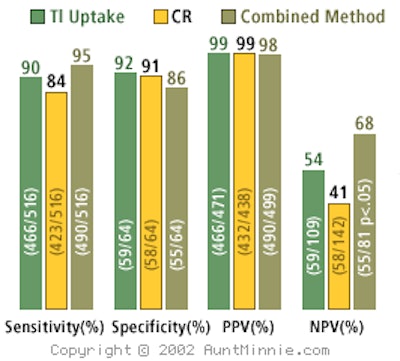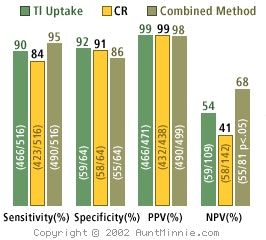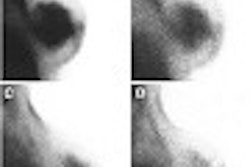
LOS ANGELES – Identifying dysfunctional but viable myocardium is essential for selecting patients who have depressed left ventricular function, yet will benefit from coronary revascularization. In such patients the myocardial tissue is said to be "hibernating"; its presence can be detected by measuring preserved thallium-201 (Tl) uptake or by the presence of contractile reserve on inotropic stimulation.
"The addition of low-dose dobutamine functional information to the dual-isotope protocol can augment the accuracy of SPECT assessment," said Dr. Sherif Heiba in a presentation Tuesday at the 49th annual conference of the Society of Nuclear Medicine.
Heiba and colleagues from St. Vincent’s Catholic Medical Centers and New York Medical College in New York City performed the study in an effort to enhance myocardial viability detection. The researchers modified the dual-isotope (sestamibi and thallium) protocol by acquiring the resting Tl images under low-dose dobutamine.
The patient cohort included 67 men and 31 women between 30 and 83 years of age, with a mean age of 60 years ±12. All had known coronary artery disease. They underwent gated SPECT resting Tl with low-dose dobutamine at 10µ per kilogram per minute during the acquisition phase. This was followed by stress Tc-99m sestamibi imaging with dobutamine, adenosine, or treadmill exercise.
The team then segmented the myocardial perfusion defects semiquantitatively into normal, fixed, and ischemic segments. These were then further subclassified by wall-motion and wall-thickening changes between 1-hour post-stress and low-dose dobutamine into normal, fixed, or improved abnormal (contractile reserve present) contractility.
The group also used F-18 FDG-PET to acquire images on 29 patients with predominately fixed myocardial perfusion defects. These images were then compared against Tl uptake or contractile reserve, or a combination of the two, for segmental myocardial viability.
 |
| Myocardial viability by thallium-201 (Tl) uptake, contractile reserve (CR), or combined method compared to PET (segments). Data courtesy of St. Vincent’s Catholic Medical Centers and New York Medical College. |
According to the results, the mean left ventricular ejection fraction was 41% at 1-hour post-stress testing, and 49% with low-dose dobutamine. In addition, improved wall motion or all thickening abnormalities under low-dose dobutamine were significantly higher in the ischemic (195/283), and fixed (56/222), than normal myocardial perfusion segments (3/795).
"The use of the low-dose dobutamine dual-isotope protocol is both a simple and feasible way to improve myocardial viability detection in addition to the usual obtained myocardial perfusion and functional information, and you can do it all in one study," Heiba said. "The best part is that it requires no extra imaging time, and no more radioactivity, than the routine dual-isotope protocol."
By Jonathan S. BatchelorAuntMinnie.com staff writer
June 19, 2002
Related Reading
Experimental beta probe locates rupture-prone plaque, June 17, 2002
Copyright © 2002 AuntMinnie.com



















